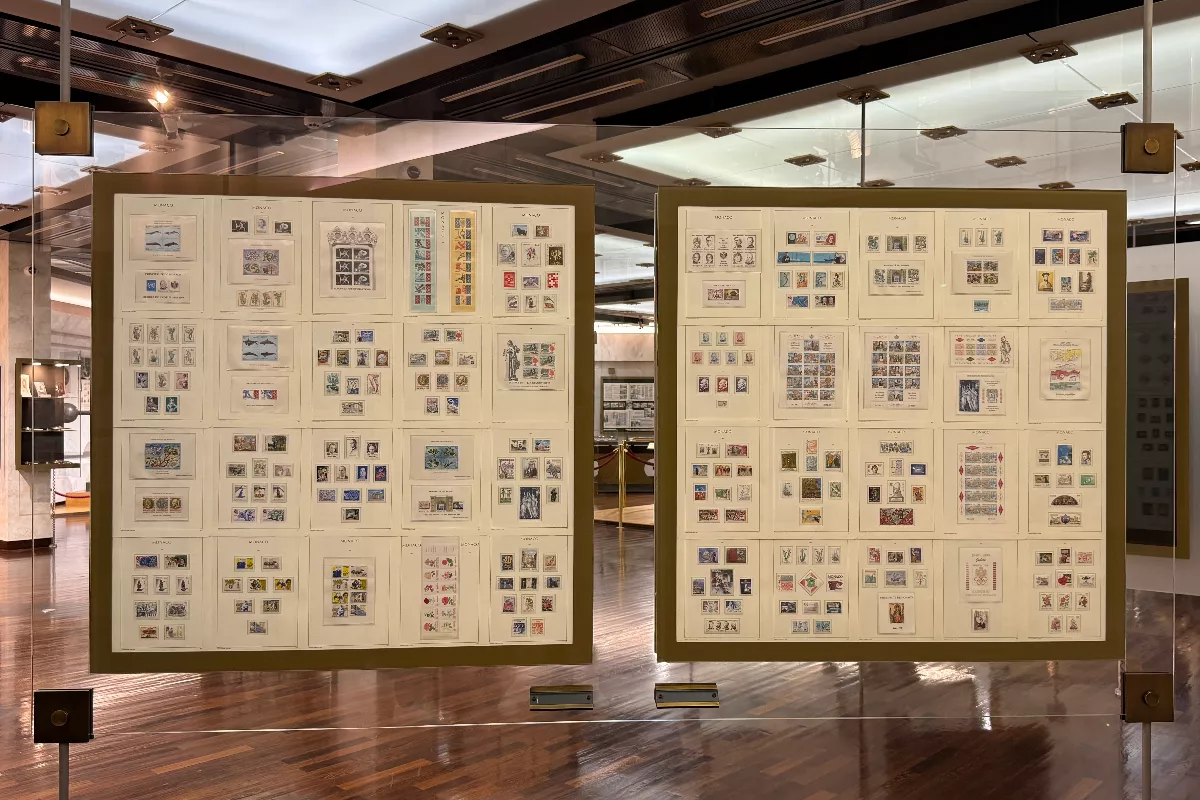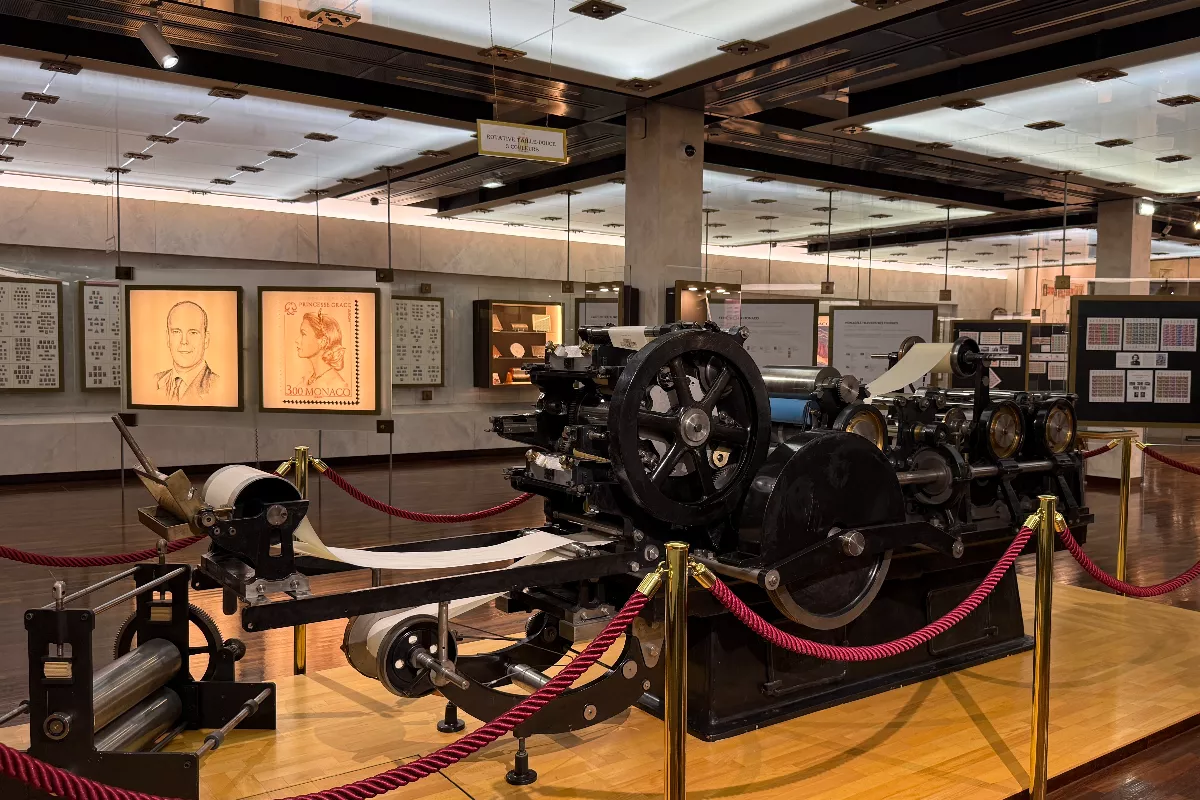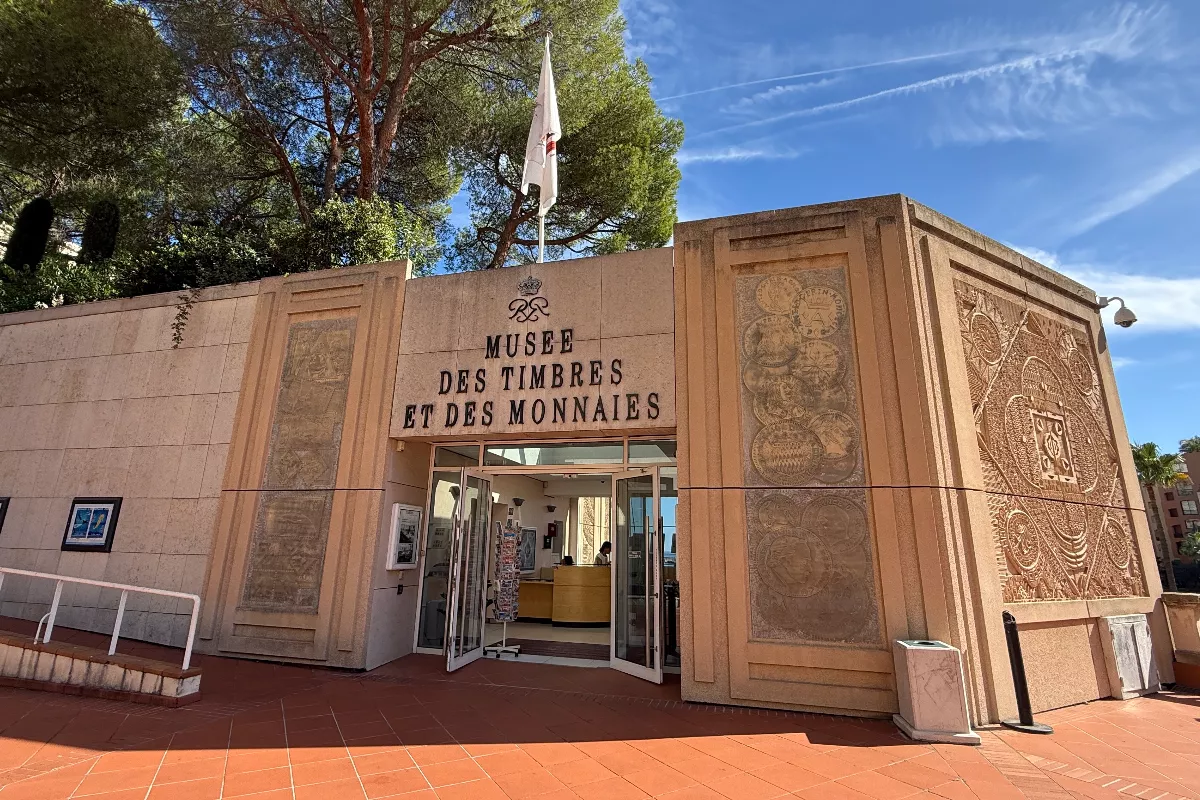Monaco’s Museum of Stamps and Coins is presenting a unique perspective on the Principality’s architectural heritage through a new exhibition running until December 31st.
‘Architecture in Philately: A History in Miniature’ features 120 rare and exceptional philatelic pieces that follow Monaco’s architectural evolution from historic landmarks to contemporary developments.
“I arrived in February as the new head of the museum with the main mission of revitalising this place, which had been somewhat forgotten,” Flavie Bonnin-Novaretti, head of the Museum of Stamps and Coins, told Monaco Life.
The exhibition, which opened on October 4th, was timed to coincide with European Heritage Day on October 5th.
The stamps provide a visual timeline of Monaco’s changing landscape. The oldest piece in the collection dates from 1939 and shows Port Hercule and the Rock extending to Spélugues. This is contrasted with a 2023 block depicting the extensive urban development that has since transformed the area.
“Architecture is a theme that has been enormously covered in philatelic issues,” said Bonnin-Novaretti. “The idea is that we can trace neighbourhoods or the evolution of buildings through time.”
The exhibition tracks the transformation of entire districts, including Larvotto from its 1966 appearance through to Renzo Piano’s recent redesign and the inauguration of the Marettera extension.

Tracking evolution
Additionally, one highlight is a series of stamps showing the evolution of the Prince’s Palace, featuring lesser-known architectural details. The collection spans from depictions of the Rock in the 17th century through to the most recent stamp issued, which shows modifications made before 2015. The series includes the Serravalle Bastion, the Clock Tower, the Odeon Tower, and the All Saints Tower.
“It allows people to gain cultural knowledge in a slightly different way, while admiring the beauty of stamps, which are truly works of art.” explained Bonnin-Novaretti.
The exhibition also demonstrates the artistic process behind stamp creation, particularly those produced using the intaglio printing technique, which requires a definer, an engraver, and a specific printing method recognised as an artistic discipline.

The display includes cultural monuments on one side and religious buildings on the other side, with particular attention give to Fontvieille’s development, from the initial sea expansion and land reclamation through to the construction of the district’s iconic buildings.
The Museum of Stamps and Coins is located at the Terrasses de Fontvieille and is open Monday to Sunday from 9:30am to 5pm.
See more in Kyriaki Topalidou’s video below…
View this post on Instagram
Stay updated with Monaco Life: sign up for our free newsletter, catch our podcast on Spotify, and follow us across Facebook, Instagram, LinkedIn, and Tik Tok.
Main photo credit: Kyriaki Topalidou, Monaco Life
